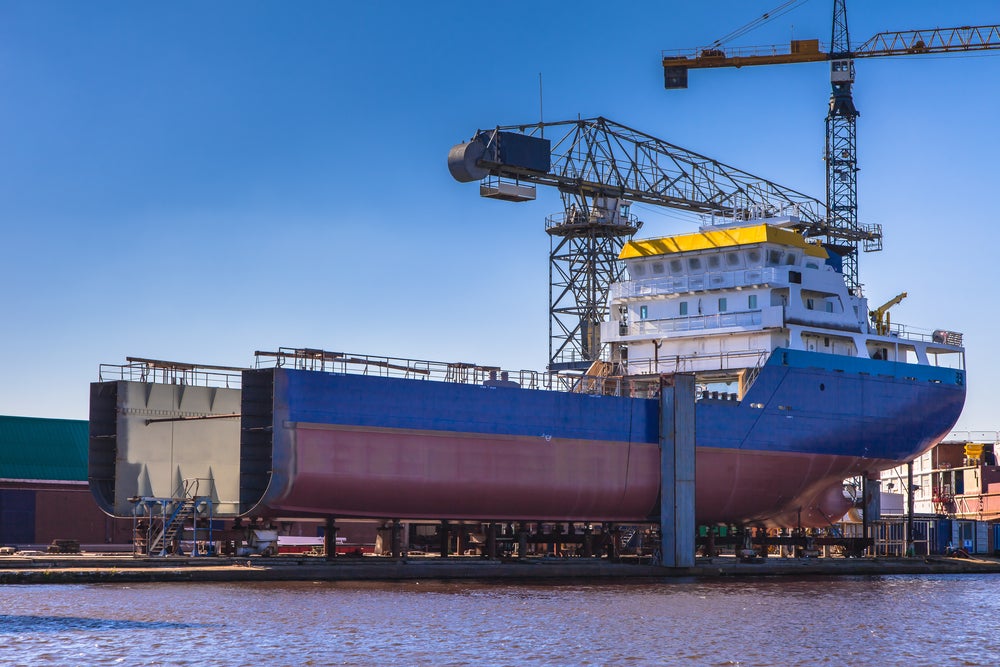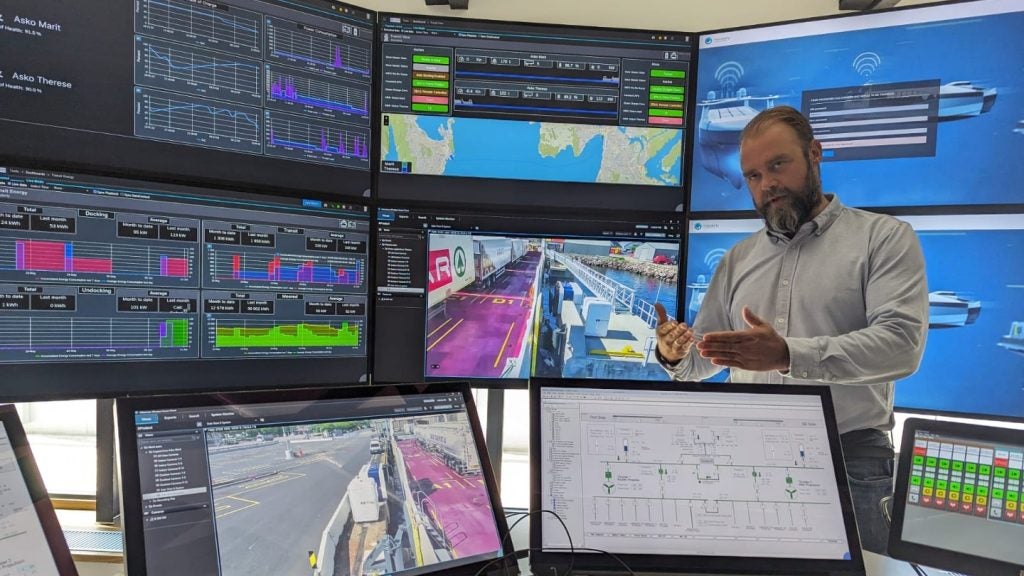Austal’s largest Trimaran, the Benchijigua Express, was delivered to the European ferry company Fred Olsen in May 2005. It serves the islands of La Gomera and La Palma and the port of Los Cristianos in the south of Tenerife.
The vessel is 126.7m in length overall and 114.8m at water level. It has a beam of 30.4m, a hull depth of 8.2m and a 4m draught. The trimaran registers a deadweight of 1,000t.
The hull is composed of aluminium and coated with an offshore film supplied by Orca Marine. This vinyl film has a service life of 10 to 12 years.
PASSENGER AND VEHICLE ACCOMMODATION
The Benchijigua Express can accommodate 1,291 passengers. It has 450 truck lane meters and space for 123 cars, a total of 341 cars or a combination of both. It can support axle loads of 15t / 12t (dual / single axles) in the central lanes, 9t / 12t (dual / single axles) outboard, 1t on the forward ramp and 0.8t on the mezzanine decks. The maximum vehicle height is 4.6m.The turnaround time is approximately 30 minutes.
The width of the vehicle decks can result in heeling when loading heavy vehicles on the outer decks. The vessel therefore has a ballast and heel control system, especially important in such a lightweight hull. This consists of two ballast tanks and two heel control tanks. The ballast system has been destined to lower the hulls in the water in parallel, increasing the transverse stability.
ENGINES AND PROPULSION
The designers were given the challenge of building a vessel that could carry 500t deadweight and achieve a speed of 40.4 knots (32.8MW). This would require four 8.2MW engines working at 90%. These four engines are positioned in two separate engine rooms in the trimaran’s central hull. The designers selected MTU 20V8000 engines which generate 8,200kW at 1,150rpm, although the operator has the option to upgrade these to a 9,200kW output; this will involve the incorporation of turbochargers and a new fuel pump.
The planned route and fuel consumption meant that the fuel tanks are designed to carry around 145,000L of fuel. Each of the two aft engines drive a Rolls Royce Kamewa 125SII steerable water jet.
The exhausts from the outboard aft engines pass through the bridge deck and exit through a funnel casing. The inboard engines have a wet exhaust system and exit between the hulls.
STEERING AND MANOEUVRING
Manoeuvring is assisted by a pair of Ulstein Aquamaster UL601 azimuthing bow thrusters. These can be operated independently or integrated into the harbour mode control of the water jets. The vessel has a Poole type SHHP anchor driven by a Hypac HHAW 120-40SRT anchor winch.
Steering is assisted by a pair of high-speed rudders. The motions of the vessel are controlled by a single T-foil located forward, and a pair of roll control fin stabilisers which are located approximately two thirds along the hull. There are also two interceptors at the transom. The ride control system is provided by Seastate.
Power is provided by four 540kW MTU 12V 2000 M40 diesel generator sets. There is also a 250kW MTU Series 60 emergency genset.
BRIDGE EQUIPMENT
The bridge contains inter-switched X and S band ARPA radars, and electronic chart display and a DGPS receiver. It has a night vision system, a voyage data recorder and Marine Link integrated monitoring alarm and control system.
Benchijigua Express is classified by Germanischer Lloyd under the notation 100A5, HSC-B OC3 High Speed Passenger/Ro-Ro Type MC AUT.














